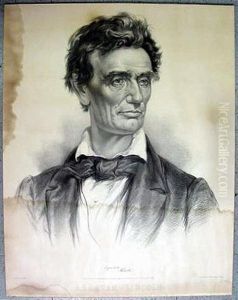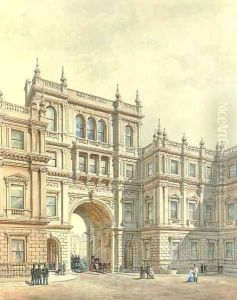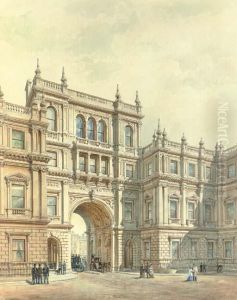Sir Charles Barry Paintings
Sir Charles Barry was a prominent British architect, best known for his role in the design of the iconic Palace of Westminster in London, home to the Houses of Parliament. He was born on May 23, 1795, in Westminster, London, into a family of stationers. He was apprenticed to a firm of surveyors and then studied at the Royal Academy Schools. Barry's early work was influenced by his extensive travels through Europe and the Middle East, where he studied classical and Renaissance architecture.
Returning to England, Barry began to establish his architectural practice. He gained recognition with his design for the Royal Manchester Institution (now Manchester Art Gallery) and went on to design numerous churches, public buildings, and country houses. His reputation was solidified when he won the public competition to design the new Houses of Parliament after the old Palace of Westminster was destroyed by fire in 1834.
Barry's design for the Palace of Westminster was in the Gothic Revival style, which he believed to be the only style 'worthy of a great country'. He worked alongside Augustus Pugin, who assisted with the Gothic detailing, while Barry focused on the overall composition of the complex. The project was vast and took much of his career to complete, with the final elements finished after his death.
Barry was also responsible for the layout of Trafalgar Square and the design of numerous other buildings, including the Treasury building and the Reform Club. He was knighted in 1852 for his contributions to architecture. Sir Charles Barry's legacy is significant in the history of British architecture; he played a key role in the development of the Gothic Revival style and left an indelible mark on the landscape of London. He passed away on May 12, 1860, and was buried in Westminster Abbey.


